| By: Scott
Fratcher - Marine Engineer/Captain
In today’s modern world yachts use a SSB for more than just
marine traffic and complying with Cat 1 regulations. We send our
email, conduct business, chat with friends, make free phone patches,
and download weather faxes.
One useful system boaties employ is sending and receiving email
through the use of a Pactor modem. This small box connects the
SSB to a computer allowing text email and small attachments to
be transmitted and received from anywhere in the world on any
ocean.
Another useful reason to have a SSB is to utilize any of the
many radio nets. Radio nets are kind of a real life chat room
where yachts traveling the world check in and give updates on
weather, local political situations and other topics relevant
to voyaging yachts.
In this article were going to explore “tricks” used
by marine electricians when installing a marine SSB.
SSB installation steps
• Choose a SSB model
• Pick a location for the radio
• Pick a location for the tuner
• Build a ground plane
• Build an antenna
• Test the system
Choosing an SSB
SSB radios are broken down into two basic categories. All-band
transceivers and marine frequency transceivers. In reality most
modern SSB radios are built as all-band transceivers, but then
“limited” in broadcast channels due to local regulations.
Most SSB radios can be “clipped” to “open”
the radio to other frequencies. An Internet search will normally
give you an idea if your chosen model can be “opened”
to all bands. This is important as once you install a SSB you
can use it for a variety of clever applications.
Given a choice I recommend two specific radios. For a straight
marine radio I use the Icom IC-M802. It’s the latest and
greatest Icom SSB and arrives out of the box email ready. This
means simply plug the radio directly into the Pactor modem, add
a laptop computer and you’re ready to send and receive email.
The Icom IC-M802 SSB/HF radio can be “opened” by Icom
NZ for a small fee. Be sure to specify the “VFO” software,
as this will allow much more efficient scanning and use on the
amateur bands.
The main body of the Icom IC-M802 is separate from the control
head and speaker. This means the radio body can be remotely located
in a safe dry place while the smaller radio control display is
positioned in a convenient location for daily use.
I also recommend the less expensive Icom IC-706MK11G (soon upgraded
to the 7000 with mini TV screen). This radio is really sold as
an amateur ham band radio, but is often used in place of full-blown
marine SSB because of its small size. It’s as tiny as an
older VHF radio, but it’s a fully functioning SSB. Best
of all the Icom IC-706MK11G also includes a 2-meter option so
it can function as an emergency VHF. This little powerhouse is
a favorite among the smaller yachts cruising the world.
When making a decision between a radio made for the amateur bands
or the marine market we have a few issues to be careful of. First
is output power. A typical SSB like the Icom IC-M802 can broadcast
150 watts of continuous power while the smaller Icom IC-706MK11G,
being a compact ham radio, only produces 100 watts of transmit
power. In practice this has always been sufficient for most communication.
A larger issue is the number of options a new amateur radio offers.
A seemingly endless array of filters, frequency selections, broadcast
types, and a host of other built in options can overwhelm the
new user. The marine band version on the other hand is so basic
yacht owners often wish for a few more options, like an easy scan
mode or a quick squelch setting or more pre-programmed frequency
options.
At the end of the day radio selection becomes a decision for
each individual yacht owner.
Picking a location for the radio
The SSB radio often becomes a centerpiece of daily life aboard
traveling yachts. For this reason the SSB should be located close
to the helm for use in an emergency, but also close to a comfortable
seating area for long chats. When picking an area to install the
radio keep in mind areas that are prone to the occasional soaking
by a wave or open hatch in the rain. The ideal location should
also be close to a safe dry place to connect and view the laptop
computer.
Another positive future of sailing with a SSB is they function
as a high quality short wave receiver. This means on lonely night
watches we listen to Radio NZ and a verity of other interesting
viewpoints broadcast from around the world.
Locating the antenna tuner
The antenna tuner is the box that matches a radio signal to antenna
length. A particular radio frequency or channel will want to “jump”
off some antenna lengths thus making a good broadcasting station.
A poor “match” will want to back feed the signal from
the antenna to the radio causing heat and eventual destruction
of the transmitter. The job of the antenna tuner is to make a
perfect match between the chosen radio frequency, and the length
of the radio antenna.
The tuner should be located as close as possible to the antenna.
To make this easier Icom antenna tuners are built watertight and
can be mounted on the deck. In use, most owners tend to mount
the antenna tuner in an area below deck where the electronics
are safe from the elements. Remember you will need a path for
the 75mm copper ground strap to the counter poise that we’ll
talk about next.
Antenna and counter poise
A SSB antenna is built in two parts, the antenna and the counterpoise.
The antenna is normally considered the easy part, as it’s
basically just a wire run into the air. We’ll discuss the
mechanics of supporting the wire later. For now lets discuss the
counter poise.
A counter poise is the half of the antenna that we normally don’t
see. It’s the connection of the antenna to the water. The
“ground plane” or counter poise is the least understood,
but most important and often overlooked aspect of a marine SSB
installation. The “ground plane” provides a “foundation”
for the antenna to “push” from.
Luckily seawater is one of the best radio grounds known. In fact
often we see commercial broadcast antennas located in swampy wetlands.
This is not because the land is cheap, but because of the easy
electrical connection to ground.
Counter poise connection
A yacht SSB installation can “connect” to the grounding
seawater in variety of ways. Lets look at the most common and
innovative methods used by marine electricians.
The traditional yacht counter poise is made by connecting metal
surface area below the water line together to form an “induced”
connection between the seawater and the ground plane (or counter
poise). This means running copper strap to metal water tanks,
keel bolts, and any other metal below the water line.
As tempting as it may be to use the engine as part of the ground
plane many electricians stay away from this for two reasons.
First the engine is also connected to ground through the starter
and alternator so a ground loop is formed. This ground loop most
often shows itself by sending a large amp load through the SSB
during engine start. This is why most SSB’s arrive with
a fuse on the negative lead as well as the positive lead.
Second, in the unlikely event of a lightening strike the immense
current can travel down the backstay, through the SSB, through
the ground plane, into the engine, and out the prop shaft to “jump”
off the sharp edges of the prop. Along this path the engine bearings
are often spot-welded thus ruining the engine.
Copper sheet laid into the hull at the time of building is another
great solution. It’s simply a matter of laying copper foil
against the hull and putting a bit of glass over the top to prevent
the copper from corroding. This is a fine solution to consider
during yacht building but what about a yacht not built with copper
laid into the hull?
Gordon West, an American radio guru recommends attaching the
SSB copper ground straight to a single bronze through hull. The
attachment is simply wrapping the copper ground strap around the
clean through hull and securing it with a hose clamp.
Now comes the all-important test. Gordon recommends powering
up the radio, pushing tune and listening to the antenna tuner.
You should hear a series of clicks as the antenna tuner does its
job of matching the antenna to the radio frequency. After all
the clicking has stopped push tune again. You should hear one
or maybe two clicks, but the antenna should be tuned and thus
the tuner should be quiet.
Next, take a roll of aluminum foil and remove about 10 meters.
Connect one end of the foil to the ground plane and toss the other
end in the water. You should now have a long stream of foil in
the water and the dry end connected to the ground plane at the
antenna tuner.
Push the tune button again and listen carefully. If the antenna
tuner starts clicking all over again then your ground plane is
not sufficient and must be improved. If you only hear a click
or two then your ground plane is sufficient and you’re done
with the ground plane installation.
Run this test on any boat if you have a question if the ground
plane is sufficient.
Another common solution to building a ground plane is the use
a of porous bronze block through mounted into the hull. This bronze
block is designed to provide all the ground plane needed by one
simple quick installation. Many marine electricians claim the
cost of the ground plane block is overcome by the fast dependable
installation.
Metal yachts have the easiest connection to ground. Simply find
a dry rib, stringer or other area of the hull. Sand the paint
to bare steel and bolt on the copper strip. This connection to
ground tends to provide a near perfect counter poise giving metal
yachts big strong booming signals.
Simple antenna designs
The antenna is the most basic part of the SSB installation. Fundamentally
for a yacht the antenna is nothing but a wire supported into the
air. The higher and longer the antenna the better. If we were
to look at any antenna instruction handbook they all start chapter
one with a description of the “long wire”. Yachts
are perfect for this easy antenna system.
One common method of making a long wire antenna is the use of
an insulated backstay. An insulated backstay is merely using an
existing piece of rigging and having an insulator installed on
each end. This is a tidy installation, but also one of the more
expensive for the DIY. Talk to your rigger to have insulated backstays
installed in your yacht.
To connect the antenna tuner to the insulated backstay use length
of high voltage antenna feed wire available at most electrical
supply houses. You should only need two or three meters of this
special insulated wire. The antenna feed wire should not make
any tight corners nor should it run next to any metal. When the
antenna feed wire runs up the backstay a series of stand-offs
should be used to prevent energy “bleeding” into the
un-insulated area of the backstay causing a shock hazard and robbing
part of our output power.
Another simple antenna design is to use a length of 4mm yacht
braid. Remove the center core and replace it with a solid wire.
Put an eye on each end of the line and support it with a halyard.
This emergency antenna is now standard on countless yachts as
many long-term boaties swear by this system. Its simple, does
not entail cutting the rigging, and can be made by most yacht
crews. The crew can feed the wire into the side of the yacht braid
where it best suites your particular installation. This makes
a good all around insulated antenna. (See sidebar or photos)
The most expensive and often most simple option is to buy a SSB
whip antenna. The advantage is a quick installation and you don’t
have to cut the backstay or support a long wire antenna. The extra
tall SSB whip antenna is most often seen on powerboats and catamarans.
Testing the system
The testing of the installation is the last important step to
ensure the SSB will be able to communicate with the outside world
when needed. The first step is to search the bands for a very
weak signal. For this test you should barely be able to make out
the broadcast. Listen for a few moments till you have a clear
idea of signal quality. Push the “tune” button and
listen for the antenna tuner to go through it’s clicking
process. When done the barely audible signal should have significantly
improved. This is because a properly tuned antenna “hears”
the intended signal better and reduces interference.
The next test is to find a radio net and try checking in. By
law you will need to have a station license for the frequency
you intend to broadcast on. Before you attempt to check in take
a few moments to listen and pick out some weak, particularly distant
stations. If you can hear them, and your installation is correct
they should be able to hear you. Ask specifically for a report
from the distant station.
The report will probably reply with something like “You
are three by two”. The first number is your readability
and the second number is the signal strength. A good report is
five by five. The above-mentioned three by two is kind of poor.
The three means your signal is not very strong, but since were
asking for a report from a week station this is probably not bad.
If you receive a poor audio signal report specifically ask if
the audio is “scratchy” or “muffled” or
“mousy” or is the audio clear, but buried in the static.
This is important as “scratchy” may be something as
simple as the mike too close to your mouth. “Muffled”
could be the radio itself not converting your voice into a “clean”
radio signal. “Mousy” often refers to a Mickey Mouse
sounding signal. This may mean your broadcast is slightly off
frequency, or the radio is “drifting”.
Most likely with a new radio installation and a good ground plane
you should hear a clear, happy “Five by five mate”.
Sidebar #1
Winlink.org gives free SSB email to boaties
Winlink is a volunteer based free email system run by Jim Corneman.
You read that right, free. No hook up charge, no cost per minute,
no buy in and in fact Winlink provides almost unlimited connection
times. Winlink is the amateur radio solution to SSB email usage.
Armature radio means you must have a ham license. At first glance
this license can scare people into thinking about antenna formulas,
late night study, Mores code and crunching numbers. In reality,
classes are taught that take the novice through the license system
in just one weekend and the Mores code requirement has been eliminated.
Once you acquire your license you will never again have to crunch
a number or figure an antenna length. From that moment on it’s
simply riding along on the free email system that works anywhere
in the world, just about any time.
If this sounds too good to be true know that by using the amateur
bands to send your email you are preserving the public bands for
future generations. The amateur bands have been slowly re-distributed
over the past years, as amateur radio interest has declined. The
advent of the Pactor email system in the mid 80’s has seen
a resurgent in the public use of the airwaves giving amateur radio
users enough political clout to again begin preserving the public
frequencies.
Another future of the Winlink system is progressive GRIB weather
charts. Send a short text email to the master computer saying
for example, your leaving Tonga, heading for New Zealand and expect
the passage to take ten days. The system will automatically email
you twice a day with forecasts for your exact position but no
other area saving download times. You can even ask for the text
of websites to be sent to you every day. This allows yacht crews
to read news headlines, or follow sports scores as they sail.
If the idea of yet another marine license seems daunting then
check out Sailmail. Sailmail is the commercial side of sending
email with a SSB and Pactor modem. Your connection time is drastically
limited per day and there is a yearly charge, but the system allows
simple email service while you take time to gain an amateur license.
To use the Winlink system the yacht will have to have a relatively
new SSB, a computer, a Pactor modem and a ham license.
For more information see Winlink.org or http://www.nzart.org.nz/nzart/.
Overcoming paint blisters near the antenna ground
Occasionally a SSB will cause electrolysis issues below the water
line. The owner may see paint blisters around the bronze-grounding
block, or on a steel boat the paint may begin to lift. One simple
solution is the use of capacitors inline with the ground plane.
Brett Martin at Icom NZ can install these into your antenna tuner
for a small fee, or you can do an Internet search and build one
yourself for just a few dollars and a little time invested.
A simple DIY SSB antenna
This simple and effective yacht SSB antenna has become a favorite
among delivery captains and cruisers alike. It’s portable
but can be left in the rigging permanently. The antenna provides
some insulation against accidental touching while broadcasting
and can normally be made from spare parts lying around a Yacht.
You will need:
• Approximately 10-15 meters of small diameter yacht braid.
• A length of regular yacht wire to run up the center of
the yacht braid
The idea is to use the cover from the length of yacht braid as
the antenna support and insulation while replacing the core with
antenna wire.
Were going to pull the core of the yacht braid out one end of
the cover while at the same time use the core to “suck”
or pull the antenna wire up the center of the cover. In essence
were going to trade the line core for a wire.
That’s it. Put a simple eye splice in each end of the line/antenna
and hoist it in the rigging. In practice the user can pick the
height off deck to feed the antenna wire into the cover. To do
this use a fid to “open” the cover and pull out the
core for attachment to the antenna wire.
Adapted from "How
to make money with boats" by Scott Fratcher
|
SSB
and Ham radio Installation
.jpg)
.JPG)
.JPG)
.JPG)
.JPG)
.JPG)
.JPG)
.JPG)
.JPG)
.JPG)
.JPG)
.JPG)
.JPG)
.JPG)
.JPG)
.JPG)
.JPG)
.JPG)
.JPG)
.JPG)
.JPG)
.JPG)
.JPG)
.jpg)
.jpg)
.JPG)
.JPG)
.JPG)
.JPG)
.JPG)
.JPG)
.JPG)
.JPG)
Basic Fast Flow Emergency Bilge Pump Kit
$599USD plus shipping
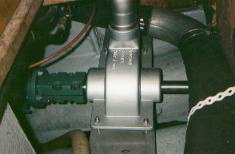
Fast flow pump installed.
Always ready - Alwasy pumping

Pump arrives in parts for easy install. No need
to remove the prop shaft
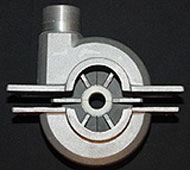
Prop shaft bilge pump installed and ready for
use
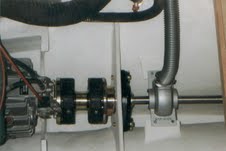
Impeller blades split in two for easy install
and come in various sized to meet every boat's needs

Pump is ready for installation.
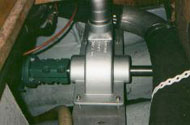
This is a safe boat with the Fast Flow propeller
driven bilge pump
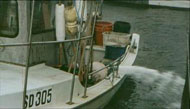
Example of a propeller driven Fast Flow bilge
pump in operation
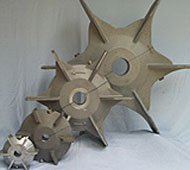
Fast Flow emergency bilge pump in position ready
to save the day
Basic Fast Flow Emergency Bilge Pump Kit
$599USD plus shipping
Order your books by Scott Fratcher here
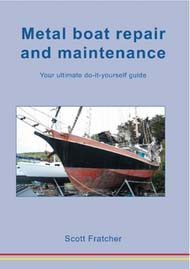
Metal boat repair and maintenance. A must read for any steel boat
owner.
Print:
$31.10
Download:
$12.00
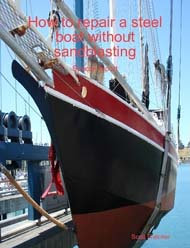
How to repair a steel boat without sandblasting. Special report.
Download:
$4.00

In order to get a good job as a marine engineer we need a marine
engineer licence, commonly called a Certificate of Competency
Print:
$39.49
Download:
$29.50
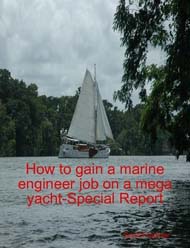
How to get a job on a mega yacht as a marine engineer? It can
be done without a licence.
Download:
$4.00
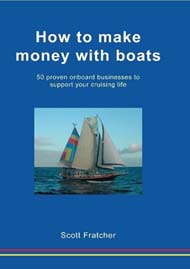
50 money making ideas run from a boat
Print:
$39.90
Download:
$39.90
Make money with boats? You bet! It's done every
day, but most people won't tell us how they did it. This book
is a tell all to give the layman the tools needed to start their
own onboard cruising business.
How to make money with boats has become an instant
classic selling around the world making dreams come true. If your
planning a cruise, or your know somone who is this is the perfect
book.
Print:
$39.90
Download:
$39.90

Print:
$21.37
Download:
$9.00
How to buy boats cheap? Dozens of tricks used
by adventurers around the world every day. This book is a must
read for anybody ready to purchase a boat.
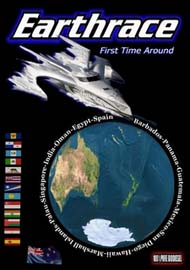
Print:
$29.96
Download:
$9.00
The race was a heartbreaker, but eventually Earthrace took the
round the world speedboat record. This book is the log and blog
of the 2007 race where Earthrace set dozens of fastest ocean record
crossings.

Download:
$12.00
Earthrace in color. The same book as above, but in vivid color
to bring all the race moments right to the reader.
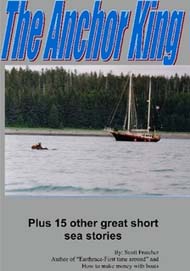
Print:
$14.97
Download:
$9.00
Anchor King is a narrative book of short stories of the Sausalito
California waterfront in the late 1980's. Anchor King contains
the award winning short story "Sex Toys?"
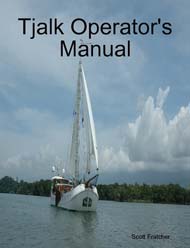
Print:
$115.47
Download:
$5.00
Tjalk Operator's Manual is an example of how
to build a yacht manual. Over 300 pages showing how to drive a
twin engine, single rudder vessel and much more.

|

